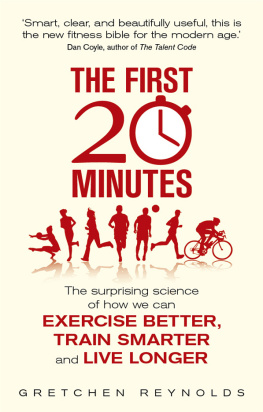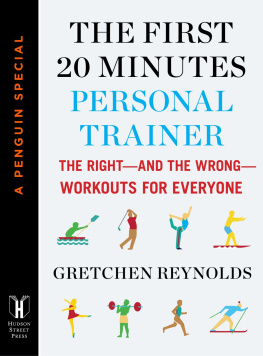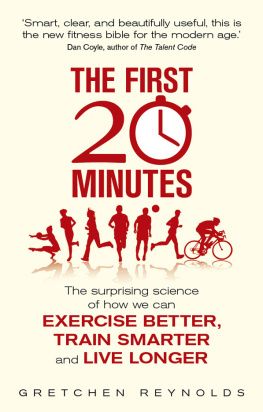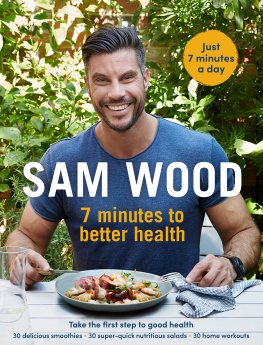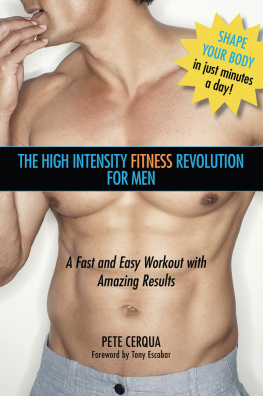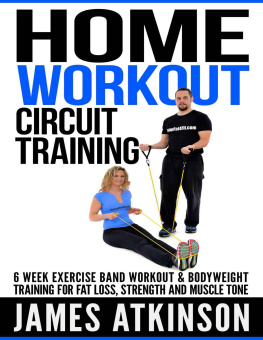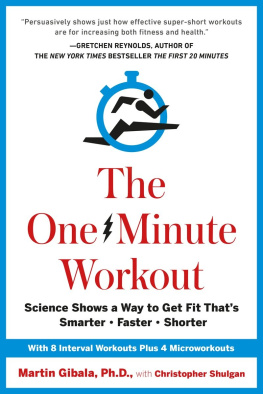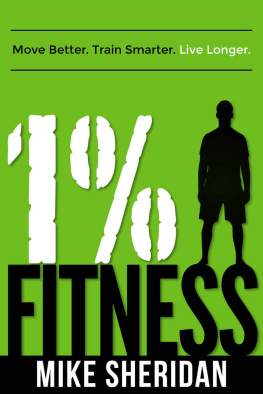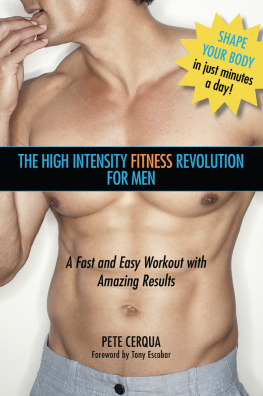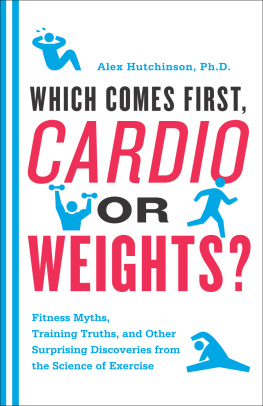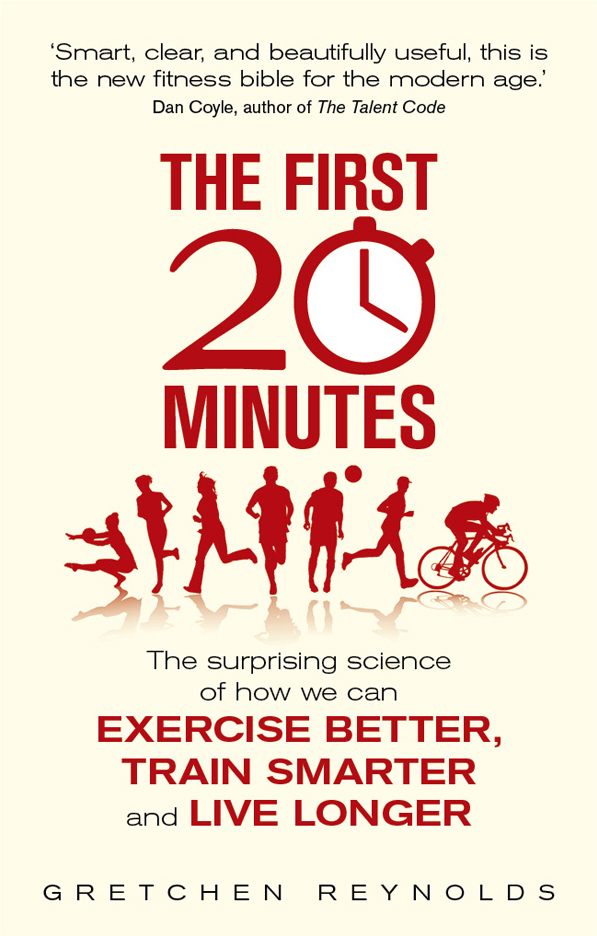T his book wouldnt have been possible without the help of many people, especially the scientists who performed the experiments that I write about. Theirs is the hard and groundbreaking work, and I thank them wholeheartedly for patiently answering my many, basic, and sometimes inane questions. I particularly want to acknowledge the assistance and expertise of Dr. Dan Carey, who passed away while I was still working on the book. Thanks, too, to Mark Bryant, the founding editor of Play magazine at the New York Times, who suggested that I write a health and fitness column for the magazine; and to my other editors at the Times: Ilena Silverman, Gerald Marzorati, Laura Hohnhold, Tara Parker-Pope, and Toby Bilanow. Special thanks to my agent Sam Stoloff and my editor Meghan Stevenson, who kept the chapters flowing when I was afraid the spigot was dry. Finally, warm thanks to my family, by blood and marriage, who put up with my long hours, frequent absences, and whining.
I NTRODUCTION
A Body in Motion
I ts become a truism to say that humankind was born to run, and perhaps some politicians were, though what proper and odd little children they must have been. For the rest of us, the notion is debatable. Consider the latest evidence. Not long ago, biologists from the University of Utah, together with zoologists from Friedrich Schiller University Jena, in Germany, and other researchers set out to study how humans move, and how divergent our locomotion is from that of, say, cheetahs or gazelles, who run so fluidly. The researchers fitted volunteers, most of them trained athletes in their twenties, thirties, or forties, with face masks that measured how much oxygen they were breathing and then had them alternately walk or run on treadmills.
Each of the volunteers was asked to run and to walk in three different ways: by landing either on their heels, on the middle of their feet, or on their toes. Some research in the past few years has suggested that humans run most efficiently, meaning with the least consumption of oxygen, when they land on the balls of their feet or on their toes. Efficiency in human movement is desirable, as it is in other forms of transport, because it means that you burn less fuel over a given distance. Like a fuel-efficient car, a more efficient human machine needs less energy to cover the same number of miles as an inefficient one. Fuel savings matters during evolution. Being able to amble long distances on less food than the next Homo sapiens could mean that youd complete a long, stalking hunt and still have the wherewithal to undertake carnal relations later and pass your DNA on to the next generation. Part of the thinking behind the idea that humans are born to run is that running, particularly if you land on your toes, should be an efficient stride and that, employing it, we would have run easily for hours, chasing down our prey.
But in this study, running was not the most efficient human stride, not by a long shot. It didnt matter whether a runner landed on his toes, the balls of his feet, or his heels. Running just wasnt fuel efficient, the data showed. Walking was. By a sizeable margin, walking, especially when the athletes landed first with their heels, was the most physically economical way for human beings to move. This estranges us from much of the animal world. Gazelles rarely walk and dont do it well. They bound madly, landing on their toes. But humans seem built to plod. We are remarkably economical walkers, the authors concluded. We are not efficient runners. We consume more energy to run than the typical mammal our size.
Conveniently, as it turns out, caveman-like hunts were probably conducted at a walking speed, anyway. When researchers recently followed a group of modern-day African hunters on a long, slow pursuit of their prey, the average speed was 3.8 miles per hour, a walking pace.
This notion that all humans were born to run is unscientific, says zoologist Karen Steudel, Ph.D., of the University of Wisconsin-Madison, whos conducted a number of comparative studies of the evolution of human and animal locomotion. The evolutionary record makes it clear that humans are born to be active, she adds. Sitting in one place wasnt an effective survival strategy when big cats and mammoths were around and food was mobile. Thats all we know for sure at the moment, she continues. But ideas can change with new discoveries. Check back in a month.
This is a book about your body in motion. Its also a book about change, because what we are learning today about the moving body is itself a flying target. Exercise science has never been so yeasty. Every week brings a new discovery that undercuts another entrenched (and often beloved) exercise practice. Who once would have believed that massage would turn out not to help tired muscles to recover? Or that chocolate milk would? For years we were told it was impossible to drink too much water during a marathon, but overdrinking, its been proven, can kill. The litany goes on. Stretching is probably bad for your muscles, but running is good for your knees. Weight training makes you smart. Lucky underpants really work. Your genes might be the reason youre so reluctant to work out in the first place. And humans are born to stroll.
Its a fascinating time to own a body, and a perplexing one.
But, really, we shouldnt be surprised that our understanding of the moving body is in flux. The body is an astonishingly complicated contraption. The machinations required just to lift your finger are boggling. Muscles interlace with nerves, tendons, ligaments, and bones. Collagen stretches against sarcomeres. Cartilage softens the rubbing of bones. The brain, initiating movement, is flooded with spidery feedback from muscles, eyes, skin, various of its own lobes, and other systems. Fluids move in and out of cells. Biochemical processes flare. The liver gets drawn in.

